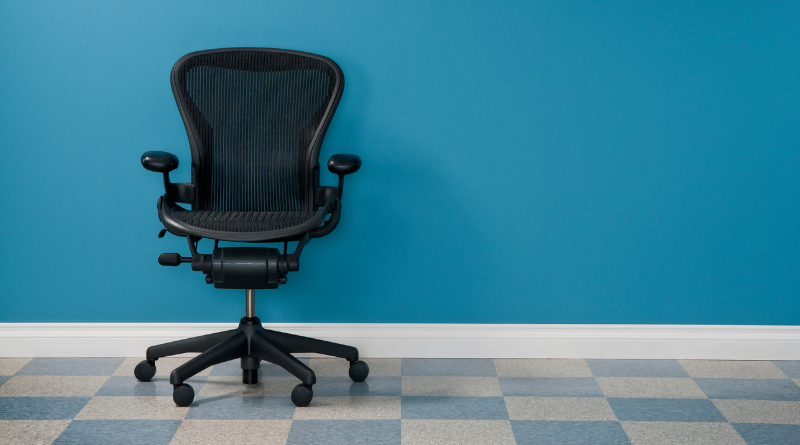Are you sitting comfortably?
Is sitting really the new smoking?
Over the last few years the idea that sitting is really, really bad for us has taken hold and If you Google the phrase ‘Is sitting the new smoking?’ you get 198,000,000 results.
According to James Levine, a professor of medicine at the Mayo Clinic, “Sitting is more dangerous than smoking, kills more people than HIV, and is more treacherous than parachuting. We are sitting ourselves to death,” he also said that “The chair is out to kill us.”
While I agree that spending a significant amount of time sat down can be detrimental to our health, any health risks can be minimised through a number of simple measures that won’t cost a fortune and you can implement today.
What are an employer’s responsibilities?
Before we look at ways to improve your workstation setup it is worth outlining an employer’s responsibilities as they owe a duty of care to their staff (if you are an employee or self-employed feel free to go straight to the tips section).
An employer has to comply with a number of regulations comprehensively covered in a 68 page document from the Health and Safety Executive (HSE). It covers office work and other environments where display screen equipment (DSE) is used and goes under the catchy title of DSE Regulations1992 as amended by the Health and Safety (Miscellaneous Amendments) Regulations 2002 and here is the link if you want to download it: https://www.hse.gov.uk/pubns/priced/l26.pdf
Employers have a responsibility to ensure the safety of their employees by:
- analysing workstations to assess and reduce risks;
- ensure controls are in place to monitor identified risks;
- providing information and training on the use of DSE;
- providing an eye test on request;
- reviewing a workstation assessment when the user or DSE changes.
The employer needs to assess the risks associated with using DSE equipment and any special needs of individual staff whether their employees work from an office or from home.
A poorly designed workstation can result in the development of musculoskeletal disorders (MSD) ranging from a sore neck, painful shoulders, headaches and wrist pain to low back and hip pain.
The HSE DSE regulations document referenced earlier includes a Workstation Checklist which can be used as a basis for risk assessment and to help ensure compliance with the regulations.
While the checklist is a useful starting point, following it does not mean that a workstation has been set up correctly as it doesn’t take into account how an individual ’actually’ works. It is possible to tick all the relevant boxes and still develop an MSD because of how you sit, how frequently you take a rest break, the type of mouse used etc.
Ways to improve your workstation setup
With prevention always being the best approach, here are 11 simple things that can easily be implemented to reduce the risk of developing a workstation-related MSD.
- TAKE REGULAR BREAKS AWAY FROM YOUR DESK!!! (this is the most important point and easiest thing to do, hence the capital letters). You can have the most expensive ergonomic equipment in the world, but if you don’t take regular breaks you could still develop an MSD. A 5-10 minute break every hour is recommended and you can set up a reminder on your PC or smartphone to make sure you don’t forget.
- You should have a height-adjustable chair that allows your feet to rest flat on the floor with your forearms resting on the desk. If you are shorter than average then you should use a footrest rather than resting your feet on the chair or adopting some other ‘unusual’ position. For taller individuals, a height-adjustable desk may be required to ensure you can maintain a comfortable position.
- Avoid crossing your legs when sitting, as this can restrict blood flow, compress nerves and create stress in your hips and low back. You also need to make sure there is a gap of at least 2 inches between the front of your seat and the back of your legs.
- Your monitor should be about an arm’s length away, with the top of the screen level with your eyes. If you are using a laptop it is worth investing in a separate keyboard, mouse and a docking station to raise the screen height (a cheaper low-tech alternative would be to use books rather than a docking station).
- Arrange the desk and screen to avoid glare or bright reflections.
- Get into the habit of looking away from the screen every 30-45 minutes and focus on a distant object for 10-15 seconds to reduce the risk of eyestrain.
- If you spend a lot of time on the phone, don’t cradle it in your neck as this will strain your neck muscles and compress the joints. You can easily avoid this problem by treating yourself to a Bluetooth headset.
- Arrange your desk so that frequently-used items e.g. phone, writing equipment, books etc. are within easy reach to avoid the need to stretch to reach them.
- Specialist equipment is available that can help to reduce any strain on your elbows, wrists and hands e.g. ergonomic keyboard, trackball, vertical mouse etc. If your job involves significant numeric input a separate numeric keypad can help to reduce shoulder and wrist strain. If you need to type for long periods of time it is worth learning how to touch-type or investing in voice to text software.
- Eat your lunch away from your desk and go for a walk during your lunch hour.
- Do some stretches during your break (here are some ideas: https://www.healthline.com/health/deskercise)
This list covers the basics and should help you avoid workstation-related aches and pains but you can follow all of the advice and still develop a problem. If that occurs you should let your employer know there is an issue and they are obliged to review your setup and implement whatever changes are required to resolve those problems.
If you are self-employed your best option is to find someone that can advise you on the likely causes of your MSD problem and provide advice on how they might be resolved.
Originally posted 2021-03-28 12:23:40.
- Are you sitting comfortably? - September 16, 2025
- Three therapists walk into a bar! - February 23, 2025
- What can you do about your “old age” aches and pains? - January 13, 2025






